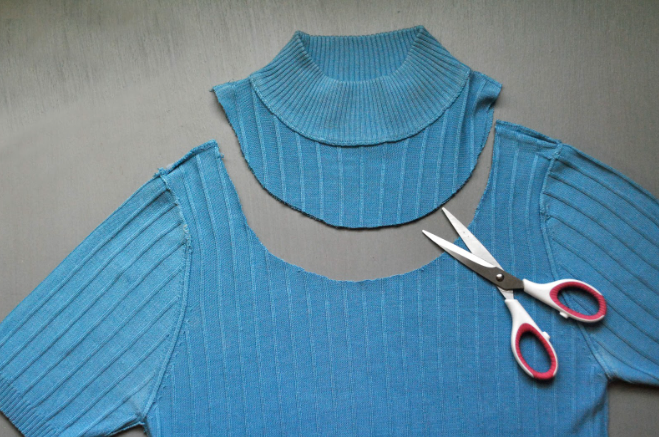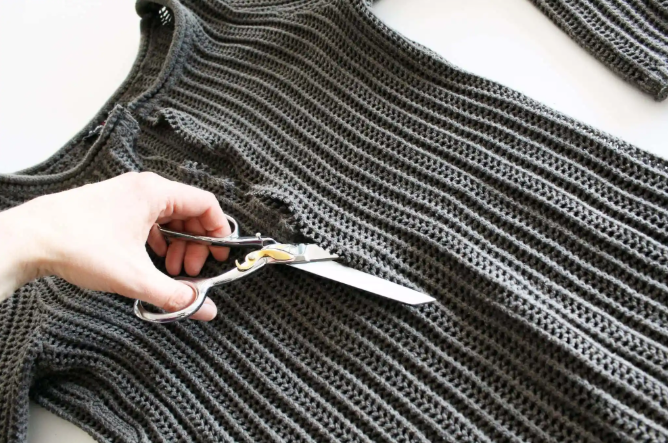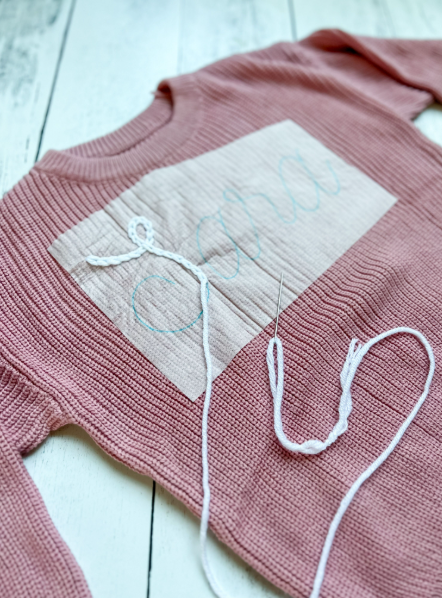
11 Easy DIY Sweater Tutorials for Women – Create Your Own Designer Winter Wardrobe
Handcrafting your own sweaters has become one of the most rewarding ways to upgrade a winter wardrobe. Beyond saving money, DIY fashion empowers women to design garments that express personality, fit perfectly, and align with sustainable living values. In an era when custom knitwear, handmade winter clothing, and eco-friendly sewing tutorials attract global attention, building your own pieces also elevates your sense of style. This comprehensive guide explores eleven inspiring ways to transform ordinary sweaters into extraordinary creations without the need for expensive designer brands or mass-produced trends.
Each project described below balances accessibility with creativity. They are designed for beginners who may only have a basic sewing machine as well as for experienced makers eager to master premium techniques such as working with stretch fabrics, premium fibers, and pattern drafting. The instructions intentionally emphasize safety, comfort, and aesthetics so you can confidently develop high-quality, personalized sweaters that reflect your lifestyle. Whether you are interested in sustainable fashion investments or simply want to refresh your closet with pieces that feel luxurious, these ideas will help you get started.

Why DIY Sweaters Are Worth the Effort
Creating your own sweaters provides a rare combination of benefits: cost savings, sustainability, and individuality. Unlike mass-market items, DIY fashion for women allows you to adjust sleeve length, neckline shape, and fabric texture according to your exact body measurements. This customization yields better fit and long-term wearability. By choosing natural fibers such as organic cotton, alpaca blends, or recycled wool, you reduce environmental impact while still enjoying premium quality. Many makers discover that DIY sweaters become cherished wardrobe staples because of the time, creativity, and intention invested in each stitch.
Essential Tools and Materials
Before diving into the eleven tutorials, gather a few essential tools. A good quality sewing machine with zigzag or stretch-stitch capability, sharp fabric scissors, hand-sewing needles, pins or clips, and measuring tape are must-haves. Depending on the project, you may also need interfacing, fusible web, fabric glue, jewelry pliers, or specialty threads for knit fabrics. Investing in reliable equipment enhances the finished look of your garments and makes the process more enjoyable. Choose fabrics thoughtfully—premium knits, soft fleece, or luxury yarn blends will elevate your results and improve comfort.

Overview of 11 DIY Sweater Projects
| Project | Description | Key Skills |
|---|---|---|
| 1. Elbow Patch Sweater | Create custom elbow patches in oval, heart, or geometric shapes using contrasting fabrics or vegan leather. | Cutting stretch fabric, appliqué techniques |
| 2. Lace-Up Front Sweater | Add eyelets and laces to transform a basic knit into a chic, adjustable lace-up design. | Eyelet setting, topstitching |
| 3. Neutral Pom-Pom Sweater | Attach handmade pom-poms for playful texture in subtle colors for everyday wear. | Yarn crafting, hand-stitching embellishments |
| 4. Studded Sweater | Add metallic studs with pliers for an edgy yet polished look that withstands multiple washes. | Hardware placement, durability testing |
| 5. Painted Graphic Sweater | Use fabric paint and stencils to apply bold graphics or delicate motifs without sewing. | Stencil creation, colorfast painting |
| 6. Feather-Stencil No-Sew Sweater | Transform a plain top with feather designs for a bohemian or upscale casual aesthetic. | No-sew fabric manipulation, heat setting |
| 7. Sequin Accent Sweater | Incorporate day-time sequins onto panels or sleeves inspired by runway trends. | Pattern drafting, sequin application |
| 8. Sweatshirt-to-Cardigan Refashion | Cut and bind edges to turn a thrifted sweatshirt into a stylish leopard print cardigan. | Edge finishing, upcycling |
| 9. Blanket Poncho Jacket | Drape a cozy blanket fabric into a belted poncho jacket with no sewing required. | Creative draping, layering |
| 10. Oversized Off-Shoulder Sweater | Adjust neckline to achieve a slouchy, designer-inspired silhouette for winter evenings. | Neckline reshaping, hemming |
| 11. Patchwork Knit Sweater | Combine fabric scraps or recycled knits into a unique patchwork pattern for an artisanal look. | Color coordination, seam pressing |
Step-by-Step Guidance in Narrative Form
Let’s walk through the process of making these designs in more detail so you can adapt them to your own preferences. Begin with the elbow patch sweater. Cut two identical shapes from durable but flexible fabric. Position them over the elbow area while wearing the sweater or using a dress form to ensure accuracy. Pin carefully to avoid shifting, then sew using a stretch stitch. For unusual shapes like hearts or stars, draw templates on paper first. This small modification instantly refreshes an old knit and adds a tailored, bespoke feel. Because high-quality patches extend the life of your clothing, this project aligns perfectly with sustainable fashion and eco-friendly wardrobes.
The lace-up front sweater involves marking a center line down the garment, inserting grommets, and threading a soft cord or velvet ribbon through the holes. This adds adjustability and an on-trend look reminiscent of designer ski-lodge pieces but at a fraction of the cost. By practicing this method you also gain confidence in working with thicker knits and structured seams.
Pom-pom embellishment brings whimsy to winter clothing. Choose muted tones such as cream, beige, or dove gray for a minimalist approach, or bright colors for youthful energy. Secure each pom with strong hand-stitching to withstand laundering. This is also a great opportunity to involve children in crafting safe elements under supervision.
Adding studs elevates a plain sweater to premium streetwear. Using jewelry pliers instead of glue ensures long-term durability and a professional finish. When applied evenly along shoulders or cuffs, the effect mimics high-end designer hardware without sacrificing comfort.
Painted or stenciled sweaters allow unlimited graphic expression. Use non-toxic fabric paints and heat-set them according to manufacturer instructions for colorfast results. Feather designs, abstract art, or even personalized monograms can be added to create a one-of-a-kind piece that doubles as wearable art.
Sequins and metallic accents have been dominating fashion weeks, and applying them strategically to your sweater can make daytime sequins completely wearable. Pair with tailored trousers or distressed denim for a high-low mix that resonates with luxury casualwear trends.
Refashioning a sweatshirt into a cardigan requires cutting a straight line down the front, finishing raw edges with bias tape or knit binding, and optionally adding a print or trim for flair. This approach exemplifies the art of upcycling: turning low-cost thrifted garments into premium-looking designer sweaters.
The blanket poncho jacket offers ultimate comfort. Simply drape a large, soft blanket around your shoulders, mark armholes if desired, and secure with a stylish belt. This quick transformation lets you appear polished while feeling like you’re still wrapped in a blanket—perfect for remote work days or weekend brunches.
For an oversized off-shoulder sweater, choose a larger knit, remove the existing neckline hem, and reshape the opening to drape elegantly. Reinforce with a narrow band to prevent stretching out over time. Worn over leggings or slim jeans, this style channels relaxed sophistication.
Finally, the patchwork knit sweater combines sustainability and artistry. Gather leftover knit fabrics or gently used sweaters, cut them into complementary shapes, and sew them together like a quilt. This technique not only diverts textiles from landfills but also yields a one-off piece that cannot be replicated by any retailer.
Tips for a Professional Finish
- Pre-wash all fabrics to prevent shrinking after construction.
- Use ballpoint needles and stretch stitches for knits to avoid skipped stitches.
- Test embellishments on scrap pieces first to check adhesion or stitching quality.
- Invest in premium sewing tools such as self-healing mats, rotary cutters, and dress forms to streamline your workflow.
- Document your process with photos; sharing your work can build a personal brand in the growing market for handmade winter clothing.
Conclusion: Build a Sustainable and Stylish Wardrobe
These eleven DIY sweater tutorials demonstrate that high-end style is accessible without overspending or sacrificing individuality. By learning simple techniques such as adding patches, painting, or reshaping necklines, you can design garments that rival expensive boutique pieces. Moreover, each project supports a more responsible approach to fashion—reducing waste, reusing materials, and valuing craftsmanship. Whether you’re aiming to develop a side business in custom women’s knitwear or simply want to refresh your closet for the season, these ideas will help you achieve a wardrobe that’s stylish, comfortable, and uniquely yours.
With patience and a little creativity, you can turn ordinary sweaters into extraordinary statements of personal style. Begin with one project, build your skills, and soon you’ll have a winter collection that reflects not only your taste but also your commitment to quality, sustainability, and self-expression.


